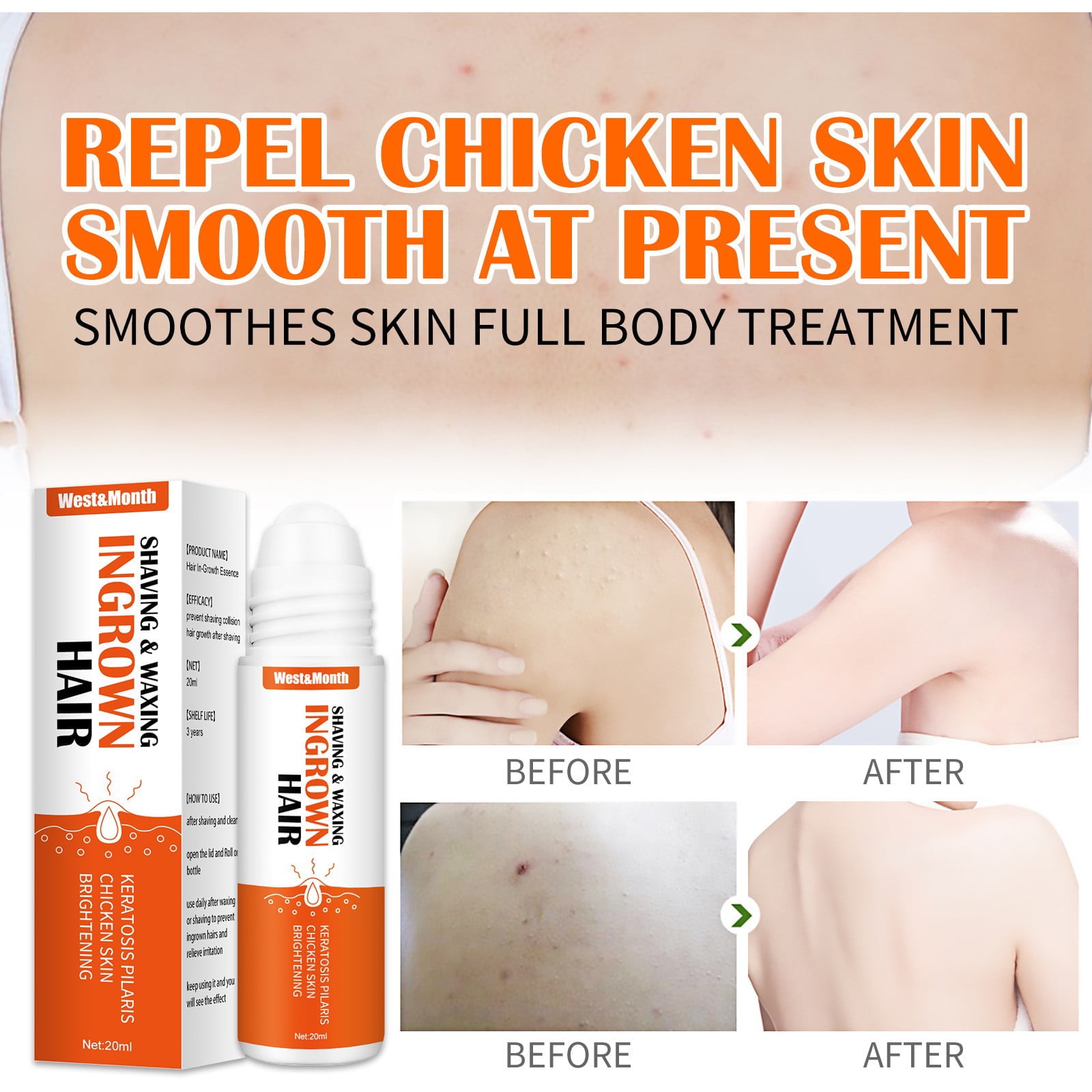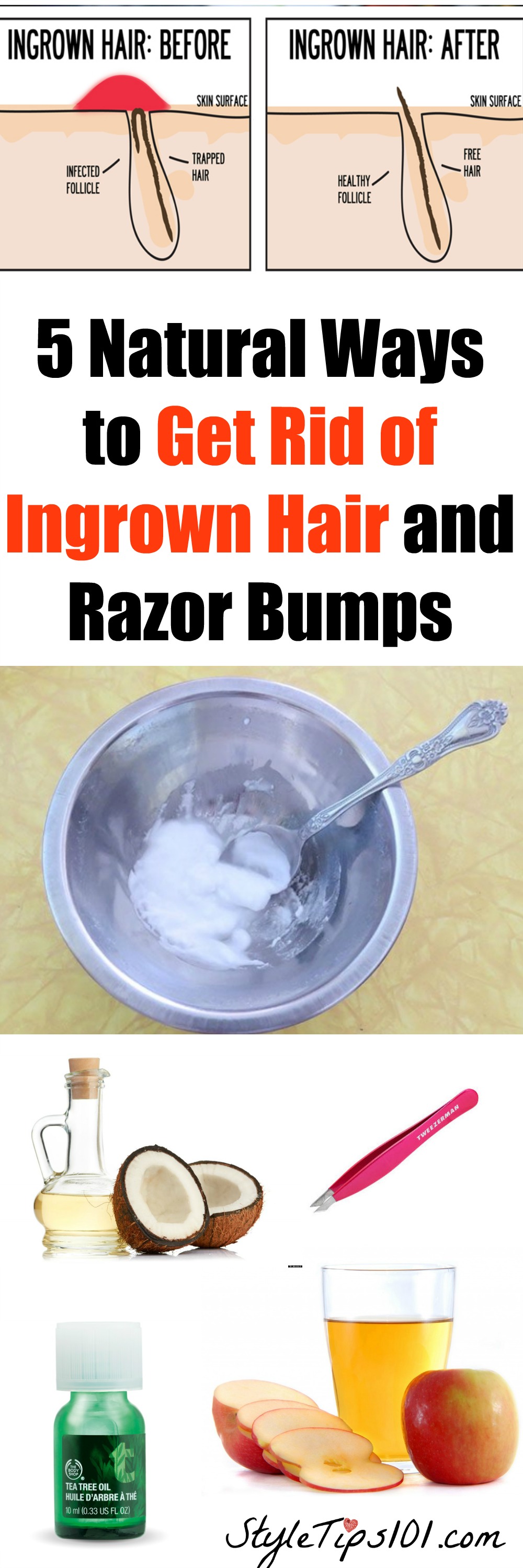Table Of Content

“You should look for glycolic, salicylic, or lactic acid,” Boakye shares. What if you’ve tried home remedies, and the ingrown hair just won’t go away? The ingrown hair may eventually make its way out of your skin. There are also situations where the hair will continue growing under your skin. In this case, Dr. Bullard suggests seeing a dermatologist. Clean the area with warm, soapy water, clean your angled tweezers with alcohol and gently grasp the hair.
Alternative hair removal methods
Preventing ingrown hairs can decrease your risk of related infections. Never pick or pop an infected ingrown hair, as this also increases the risk of complications. Not all ingrown hairs become infected, and they usually resolve on their own in a few days. For a severe infection, they can prescribe medication to treat it and coax the hair out. For example, prescription steroid creams can reduce inflammation, and prescription-strength antibiotic creams can treat the infection.
VIDEO: Man Extracts Ingrown Hair That Looks Like Blackhead - Business Insider
VIDEO: Man Extracts Ingrown Hair That Looks Like Blackhead.
Posted: Thu, 09 Nov 2017 08:00:00 GMT [source]
How can I prevent ingrown hair?
If the hair is near the skin’s surface, however, you may be able to remove it by gently grasping it with sterilized tweezers. Lasers are the most effective tool for getting rid of all unwanted hair, including ingrowns. The laser destroys the follicle, which no amount of lotion or moisturizer can do. With any luck, you’ll be able to get the edge of the hair out so that it doesn’t continue to grow under the skin. If you’re able to do so, complete the process by washing and exfoliating the area thoroughly.
What does an infected ingrown hair cyst look like?
So far, 37 million people have mustered up the guts to watch it. Then I discovered this product, and the results were nothing short of miraculous. Within just two days of use, the red bumps that had plagued me for years were significantly reduced. The road of life might be full of bumps, but your shaving or waxing experience doesn't have to be. There’s no such thing as one method that suits all when it comes to hair removal techniques, it really is up to the individual to find what works best for them. It’s easy to use, with the added benefit of a soothing cream to help seal moisture back into the skin, and we were pretty impressed.
Traditional methods of hair removal, such as shaving and waxing, involve cutting the hair off at the skin. But shaving doesn’t remove the entire hair — it only removes the part that you can see. One very useful product is adapalene gel, an over-the-counter retinoid medication.

"But unless you’re skilled enough and able to do this in a clean environment, I generally advise against removing deep ingrown hairs yourself, as there’s a risk for infection, scarring, and damage to the skin." Remember, if you have a deep ingrown hair that just isn't going away, see your dermatologist. In some cases, they might use laser hair removal to remove your ingrown hair. Technology in this area has come a long way, and doctors today have access to lasers that can treat all skin types. "It is highly effective and less painful, and most importantly safe on darker skin tones, which is ever so important in our changing demographics in the U.S.," Palm says. Some prescription medications can help prevent ingrown hairs.
Mayo Clinic Press
Finally, an entire Instagram account devoted to the removal of ingrown hairs - Mashable
Finally, an entire Instagram account devoted to the removal of ingrown hairs.
Posted: Thu, 12 Oct 2017 07:00:00 GMT [source]
“The razor leaves the end of the hair sharp, making it more likely to pierce back into the skin,” Dr. Hayag says. Ingrown hairs occur when hair curls around and grows back into the skin or if dead skin clogs the hair follicle and forces it to grow sideways. They look like small red dots on your skin, roughly the size of a pimple, and can become infected. If you have a stubborn ingrown hair, try loosening it with an exfoliator and a warm compress, and then pulling the hair loose with a pair of sterile tweezers.
Depending on the severity of the infection, it might still clear up on its own. To speed along the healing process at home, you can cleanse the area with gentle soap and water and apply a warm compress for 10 to 15 minutes, three times per day, Dr. Clay says. You’re also more likely to have ingrown hair if you have skin of color or thick, coarse or curly hair. From a distance, you might mistake this ingrown hair for a scab. A few gentle tugs with a pair of tweezers reveal that it's really an ingrown hair that was probably embedded for years. This video features a man whose ingrown beard hair never seems to end.
No redness, itchiness or sore feeling occurred at any time, and the soothing cream was a great addition to help keep things hydrated. As we mentioned, ingrown hairs can get infected and become even peskier than they already are. This happens when bacteria from the skin’s surface get into the follicle; it could be from an accidental tear in the skin or from poking at an ingrown hair with unclean hands or tweezers, Dr. Clay explains.

Infections can develop around the ingrown hair, causing pus formation, discoloration and pain, though. If you see signs of infection, you should visit your healthcare provider. If an ingrown hair becomes infected, you may notice the bumps getting bigger and more painful. Shaving – the quick and easy hair removal option, but there’s a chance of nicks, cuts, shaving rashes and ingrown hairs. If you often develop infected ingrown hairs, the doctor may take a skin sample for testing.
Using a hair removal cream on your face can be nerve-racking. After all, it’s one of the most sensitive areas of skin on the body, and a chemical burn could cause some real damage. So please, proceed with caution, patch test first and never exceed the maximum amount of time stated in the instructions. But pre-warning aside, this Veet face cream certainly did impress. Coming in a set with both a facial hair removal cream and a post-removal soothing cream, it was easy to use, didn’t have the overpowering hair removal cream smell and, when following the instructions, worked wonders. On finer, thinner hairs, five minutes was enough to leave the skin silky smooth, while coarser strands took nearer the 10-minute mark.

No comments:
Post a Comment